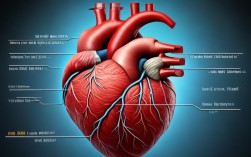Abbreviations are everywhere in modern communication, saving time and space while conveying complex ideas quickly. When it comes to English abbreviations starting with the letter B, the list is surprisingly diverse—spanning technology, business, science, and everyday slang. Whether you're a student, professional, or language enthusiast, understanding these shorthand forms can enhance clarity in emails, reports, and casual conversations.

Business & Finance
B2B (Business-to-Business)
Refers to transactions between companies rather than between a company and individual consumers. Examples include wholesale suppliers and SaaS platforms catering to enterprises.
B2C (Business-to-Consumer)
The opposite of B2B, this model involves companies selling directly to end-users—think retail stores or streaming services.
EBITDA (Earnings Before Interest, Taxes, Depreciation, and Amortization)
A key financial metric used to evaluate a company’s operating performance, excluding non-core expenses.
IPO (Initial Public Offering)
When a private company lists shares on a stock exchange for the first time, allowing public investment.
Technology & Computing
BIOS (Basic Input/Output System)
Firmware used to perform hardware initialization during a computer’s boot process.
BPS (Bits Per Second)
A measure of data transmission speed, often used for internet bandwidth.
BYOD (Bring Your Own Device)
A workplace policy allowing employees to use personal devices for work tasks.
BLE (Bluetooth Low Energy)
A power-efficient version of Bluetooth, commonly used in IoT devices like fitness trackers.

Science & Medicine
BMI (Body Mass Index)
A numerical value derived from height and weight, used to categorize weight ranges.
BPA (Bisphenol A)
A chemical found in plastics, often discussed for its potential health effects.
BMR (Basal Metabolic Rate)
The number of calories your body needs at rest to maintain basic functions.
BCI (Brain-Computer Interface)
Technology enabling direct communication between the brain and external devices.
Education & Academia
BA (Bachelor of Arts)
An undergraduate degree in liberal arts, humanities, or social sciences.
BSc (Bachelor of Science)
An undergraduate degree focused on scientific or technical disciplines.
B.Ed (Bachelor of Education)
A professional degree for aspiring teachers.
BFA (Bachelor of Fine Arts)
A specialized degree for students in visual or performing arts.

Government & Military
FBI (Federal Bureau of Investigation)
The U.S. federal agency responsible for domestic intelligence and law enforcement.
CIA (Central Intelligence Agency)
The U.S. government’s foreign intelligence service.
NATO (North Atlantic Treaty Organization)
A military alliance of North American and European countries.
BOLO (Be On the LookOut)
Law enforcement term for alerts about suspects or missing persons.
Everyday Slang & Informal Terms
BRB (Be Right Back)
A quick way to indicate a temporary absence in digital conversations.
BFF (Best Friends Forever)
Popularized in texts and social media to denote close friendships.
BTW (By The Way)
Used to introduce an additional comment or side note.
BAE (Before Anyone Else)
A term of endearment for a romantic partner.

Travel & Transportation
B&B (Bed and Breakfast)
A small lodging establishment offering overnight stays and morning meals.
BRT (Bus Rapid Transit)
A high-capacity public transport system with dedicated lanes.
BWI (Baltimore/Washington International Airport)
An airport code for a major U.S. travel hub.
Miscellaneous
DIY (Do It Yourself)
A movement encouraging self-made projects without professional help.
FAQ (Frequently Asked Questions)
A standard section on websites addressing common queries.
RSVP (Répondez S’il Vous Plaît)
French for "please respond," used in event invitations.
Mastering these abbreviations isn’t just about memorization—it’s about recognizing how language evolves to fit fast-paced communication. Whether drafting an email, reading a financial report, or texting a friend, these B-starting shortcuts streamline understanding. The next time you encounter an unfamiliar abbreviation, a quick search can reveal its meaning and context, turning confusion into clarity.






